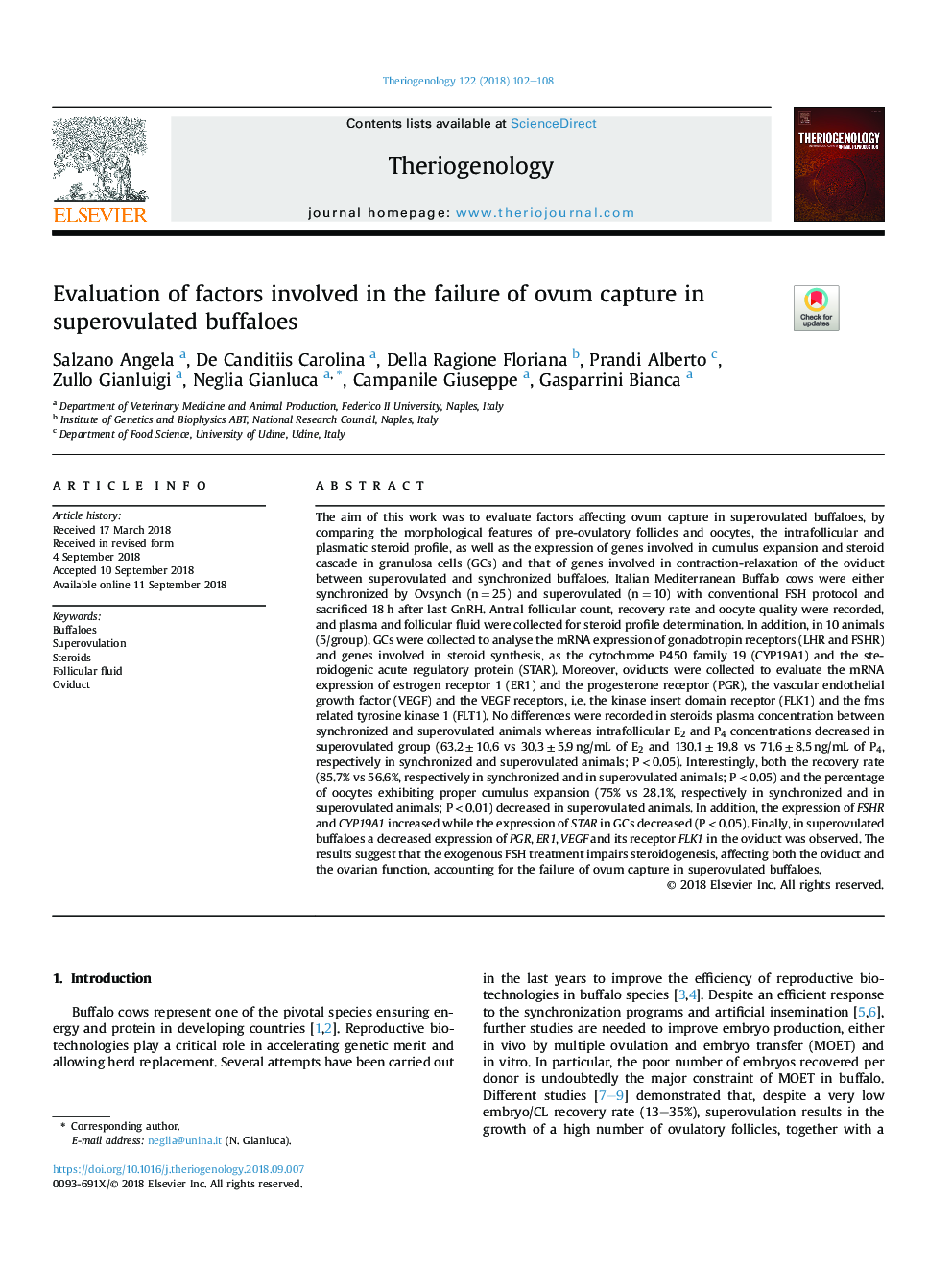| کد مقاله | کد نشریه | سال انتشار | مقاله انگلیسی | نسخه تمام متن |
|---|---|---|---|---|
| 10148208 | 1646540 | 2018 | 7 صفحه PDF | دانلود رایگان |
عنوان انگلیسی مقاله ISI
Evaluation of factors involved in the failure of ovum capture in superovulated buffaloes
ترجمه فارسی عنوان
بررسی عوامل مؤثر بر شکست ضایعات تخمک در بوفالوهای سوپرواکتیو
دانلود مقاله + سفارش ترجمه
دانلود مقاله ISI انگلیسی
رایگان برای ایرانیان
کلمات کلیدی
موضوعات مرتبط
علوم زیستی و بیوفناوری
علوم کشاورزی و بیولوژیک
علوم دامی و جانورشناسی
چکیده انگلیسی
The aim of this work was to evaluate factors affecting ovum capture in superovulated buffaloes, by comparing the morphological features of pre-ovulatory follicles and oocytes, the intrafollicular and plasmatic steroid profile, as well as the expression of genes involved in cumulus expansion and steroid cascade in granulosa cells (GCs) and that of genes involved in contraction-relaxation of the oviduct between superovulated and synchronized buffaloes. Italian Mediterranean Buffalo cows were either synchronized by Ovsynch (nâ¯=â¯25) and superovulated (nâ¯=â¯10) with conventional FSH protocol and sacrificed 18â¯h after last GnRH. Antral follicular count, recovery rate and oocyte quality were recorded, and plasma and follicular fluid were collected for steroid profile determination. In addition, in 10 animals (5/group), GCs were collected to analyse the mRNA expression of gonadotropin receptors (LHR and FSHR) and genes involved in steroid synthesis, as the cytochrome P450 family 19 (CYP19A1) and the steroidogenic acute regulatory protein (STAR). Moreover, oviducts were collected to evaluate the mRNA expression of estrogen receptor 1 (ER1) and the progesterone receptor (PGR), the vascular endothelial growth factor (VEGF) and the VEGF receptors, i.e. the kinase insert domain receptor (FLK1) and the fms related tyrosine kinase 1 (FLT1). No differences were recorded in steroids plasma concentration between synchronized and superovulated animals whereas intrafollicular E2 and P4 concentrations decreased in superovulated group (63.2â¯Â±â¯10.6 vs 30.3â¯Â±â¯5.9â¯ng/mL of E2 and 130.1â¯Â±â¯19.8 vs 71.6â¯Â±â¯8.5â¯ng/mL of P4, respectively in synchronized and superovulated animals; Pâ¯<â¯0.05). Interestingly, both the recovery rate (85.7% vs 56.6%, respectively in synchronized and in superovulated animals; Pâ¯<â¯0.05) and the percentage of oocytes exhibiting proper cumulus expansion (75% vs 28.1%, respectively in synchronized and in superovulated animals; Pâ¯<â¯0.01) decreased in superovulated animals. In addition, the expression of FSHR and CYP19A1 increased while the expression of STAR in GCs decreased (Pâ¯<â¯0.05). Finally, in superovulated buffaloes a decreased expression of PGR, ER1, VEGF and its receptor FLK1 in the oviduct was observed. The results suggest that the exogenous FSH treatment impairs steroidogenesis, affecting both the oviduct and the ovarian function, accounting for the failure of ovum capture in superovulated buffaloes.
ناشر
Database: Elsevier - ScienceDirect (ساینس دایرکت)
Journal: Theriogenology - Volume 122, December 2018, Pages 102-108
Journal: Theriogenology - Volume 122, December 2018, Pages 102-108
نویسندگان
Salzano Angela, De Canditiis Carolina, Della Ragione Floriana, Prandi Alberto, Zullo Gianluigi, Neglia Gianluca, Campanile Giuseppe, Gasparrini Bianca,
